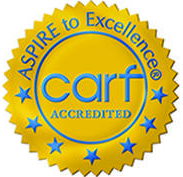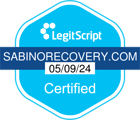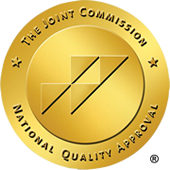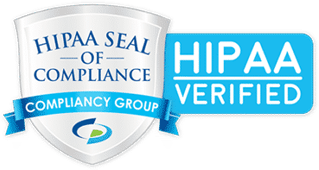Stimulant Addiction in Arizona
Our Tucson residential rehab offers addiction treatment for stimulants including cocaine, methamphetamines, and prescription stimulants. If you or someone you love is struggling with stimulant abuse, call our team today to discuss a treatment plan!

Is Addiction Impacting Your Life?
Take The First Step To True Healing Today!
What are the Symptoms of Stimulant Addiction?
- Changes in social groups
- Taking part in dangerous activities to get the stimulant of choice
- Stopping activities that used to be enjoyed
- Repetitive movements
- Failing to complete obligations at home or work
- A heightened state of awareness and alertness
- Weight loss
- Muscle weakness
- Chest pain and rapid heartbeat
- Nausea and vomiting
- Blood pressure changes
- Seizures
- Sweating or chills
- Intense cravings
- Not being able to stop using or reduce dosage
- Needing stimulants to perform everyday activities
- Needing increasingly higher doses to feel the same effects
- Experiencing withdrawal symptoms when trying to stop or cut down
How Do Stimulants Affect You?
Stimulants are meant to increase alertness and energy by enhancing the nervous system. But when used against medical advice or recreationally, stimulants may have the following effects:
- Promote a feeling of exhilaration
- Improve physical and mental performance
- Reduce appetite
- Increase activity
- Stay awake longer
Chronically taking higher doses of a stimulant may result in these symptoms:
- Agitation
- Hostility
- Aggression
- Panic
- Suicidal or homicidal inclinations
- Paranoia–occasionally with auditory and visual hallucinations
- Tolerance–more and more is needed to produce the usual effects
- Psychological dependence
The strongest psychological dependence happens with the more powerful stimulants such as methamphetamine and cocaine.
Stimulants are sometimes called uppers because they reverse the feelings of fatigue on both mental and physical tasks. Stimulant use can cause:
- Prolonged wakefulness
- Excitement
- Loss of appetite
Taking a large dose at one time or taking large doses over an extended period may cause physical side effects such as:
- Dizziness
- Tremors
- Headaches
- Heart palpitations and chest pain
- Extreme sweating
- Vomiting
- Abdominal cramping
- Flushed skin
Depending on the type of stimulant, the risk of tolerance and dependence will vary. Individuals who use stimulants like cocaine, meth, or nicotine regularly can build a dependence on them. They may feel like they need the drug just to go about their normal activities of working, studying, or socializing. Tolerance may also be developed. This means they need larger amounts of the drug to get the desired effect.
Dependence is different when the person is using a prescribed stimulant such as dexamphetamine or methylphenidate (Ritalin) to treat ADHD or narcolepsy. People using these medications may rely on them to manage their underlying condition and support daily functioning. The risk of harm is more likely to happen with non-prescribed use such as taking more than prescribed, mixing with other drugs, or taking them differently from how they were prescribed.
It’s a common misunderstanding that prescription stimulants are not addictive. Although they have a legitimate medical purpose and are legal, the risks of abuse and addiction are still there. In fact, any substance that has psychoactive effects can be addictive.
Psychostimulants with a high potential for abuse are a subgroup of stimulants that have a higher risk of being misused because of their effects on the central nervous system. This group includes illegal drugs such as methamphetamine, ecstasy, and cocaine, as well as prescription stimulants such as Ritalin and Adderall. These drugs can be misused and are considered addictive. All psychostimulants are stimulants, but not all stimulants are psychostimulants.
Contact Our Admissions Team Today
How Do Stimulants Work?
Regular or prolonged use causes the brain to decrease its own production of norepinephrine and dopamine and start to depend on stimulants to fulfill these levels instead. Eventually, the user will become dependent on stimulants just to feel “normal.” This makes it very difficult to stop using on their own.

Testimonials
![]()
![]()
![]()
![]()
![]()
Regina
I am so happy that I chose Sabino to begin my recovery. I have suffered for years from depression, anxiety, panic disorder, and PTSD. The programs that are offered here at Sabino have been truly phenomenal in helping me recover. I also appreciated the professional staff that are here on duty 24/7, which helps create a safe environment. Sabino Recovery uses effective “one on one” methods that meet each person’s individual needs because they evaluate and have a better understanding of your personal traumatic experiences. Thanks Sabino, I am truly grateful to you and the Sabino family.
![]()
![]()
![]()
![]()
![]()
J.A.
A beautiful facility! Staff sets the tone and kindness that residents easily follow. Thank you, Sabino Recovery!
![]()
![]()
![]()
![]()
![]()
Pamela
The program at Sabino Recovery works! I emerged from an accumulation of unrecognized emotions, issues of trust, and unresolved grief and loss. 35-days of effective integration of customized quality therapy reconnected my mind, body, spirit, and I am worth it! I had masked emotions and hurtful events for decades with alcohol. At Sabino Recovery I safely focused deep within to unleash harmful secrets and self-degradation. Tools of recovery were practiced, not just presented. Integrative therapies were tailored to my circumstances, thus were effective. This residential program is like no other. For me, Sabino Recovery delivered what was professed. I am forever grateful for this gift of healing.
![]()
![]()
![]()
![]()
![]()
Mike
Life changing experience. Wonderful staff. Wonderful program. Thanks for everything!
![]()
![]()
![]()
![]()
![]()
Darcy
It was great to begin my recovery in a group environment with so many knowledgeable nurses, therapists, BHT’s, and others around for support. The equine therapy, challenge course, family week, and daily therapies all work together seamlessly, allowing me to leave Sabino as a healthier and stronger person!
How is Stimulant Addiction Treated?
Residential Treatment for Stimulant Addiction
For individuals struggling with stimulant addiction, residential treatment provides a safe, structured environment to begin the recovery process. At Sabino Recovery, we offer a comprehensive, trauma-informed approach that addresses not only substance use but also the underlying emotional and psychological factors driving addiction. In our residential program, clients receive 24/7 medical care, nutritional support, and personalized therapy to help them heal physically and emotionally.
Outpatient Treatment for Stimulant Addiction
For those who do not require full-time care, outpatient treatment provides flexibility while still offering essential support. Outpatient programs include individual therapy, group counseling, and holistic therapies that help clients transition back to daily life while maintaining recovery. Outpatient treatment is an excellent option for those who have completed residential care or have a supportive home environment.
Therapies for Stimulant Addiction at Sabino Recovery

NARM therapy focuses on healing developmental and relational trauma by helping individuals recognize how their early experiences impact their emotions, behaviors, and relationships. Since many people struggling with stimulant addiction have unresolved trauma, NARM helps them develop healthier coping strategies and emotional regulation instead of turning to stimulants.
EMDR is an evidence-based therapy that helps individuals process traumatic memories that contribute to addiction. By using bilateral stimulation, EMDR allows clients to reprocess painful experiences so they no longer trigger the need for stimulants as a coping mechanism.
Brainspotting therapy helps access deep emotional and trauma-based memories by identifying “brainspots,” or areas of focused attention, where trauma is stored. This therapy is especially beneficial for stimulant addiction because it helps resolve unconscious emotional triggers, reducing cravings and improving emotional regulation.
Cognitive-behavioral therapy is one of the most effective therapies for addiction, helping individuals recognize and change negative thought patterns and behaviors that contribute to stimulant use. Through CBT, clients learn healthy coping strategies, relapse prevention techniques, and ways to manage cravings without relying on substances.
Dialectical behavior therapy for addiction focuses on emotional regulation, distress tolerance, mindfulness, and interpersonal effectiveness—all critical skills for individuals recovering from stimulant addiction. Since stimulants often lead to impulsivity and emotional instability, DBT helps clients manage their emotions in healthier ways and build more stable relationships.
One-on-one therapy sessions allow clients to explore personal challenges, trauma, and emotional struggles in a safe, supportive space. With a personalized approach, therapists help individuals develop tailored coping mechanisms and address the root causes of stimulant addiction.
Group therapy fosters connection and support among individuals in recovery. Sharing experiences with others who understand the challenges of stimulant addiction can reduce feelings of isolation and shame, provide encouragement, and build a sense of community that strengthens long-term recovery.
Addiction impacts not just the individual but also their loved ones. Family therapy helps rebuild trust, improve communication, and address family dynamics that may contribute to stimulant addiction. By involving family members in the healing process, clients gain a stronger support system for sustained recovery.
Many individuals turn to stimulants as a way to cope with unresolved trauma, PTSD, or deep emotional pain. Stimulants can provide temporary relief by increasing energy and numbing difficult emotions, but over time, they can lead to dependence and worsening mental health issues.
At Sabino Recovery, we understand that treating addiction without addressing trauma is incomplete. Our trauma-informed approach focuses on identifying and healing past wounds through specialized therapies, helping clients develop healthy coping mechanisms and break free from the cycle of addiction. By treating both trauma and stimulant addiction together, we give individuals the tools they need for lasting recovery and emotional well-being.
If you or a loved one is struggling with stimulant addiction, Sabino Recovery is here to help. Contact us today to begin your journey toward healing.
Nationally Recognized & Accredited




Healing at Sabino Recovery





